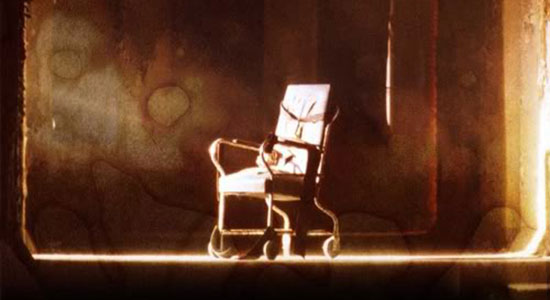 One constant over the past 17 years of MAGNET has been the music of Jason Noble. First with the post-hardcore Rodan, then the classically inclined Rachel’s, the post-rock Shipping News and the theatrically concerned Young Scamels, Noble has always been involved with projects that interested and challenged us. Noble has two new releases: a live Shipping News album, One Less Heartless To Fear (Karate Body/Noise Pollution), and the debut LP from the Young Scamels, Tempest (File 13). Unfortunately, creating music is hardly the main concern for Noble these days. The 39-year-old Louisville, Ky., native was diagnosed with synovial sarcoma, a rare form of cancer, 15 months ago and is currently battling the disease with the determination, positive energy and modesty he has always displayed in his two-decade musical career. MAGNET is proud to have Noble guest editing our website all week. Read our Q&A with him.
One constant over the past 17 years of MAGNET has been the music of Jason Noble. First with the post-hardcore Rodan, then the classically inclined Rachel’s, the post-rock Shipping News and the theatrically concerned Young Scamels, Noble has always been involved with projects that interested and challenged us. Noble has two new releases: a live Shipping News album, One Less Heartless To Fear (Karate Body/Noise Pollution), and the debut LP from the Young Scamels, Tempest (File 13). Unfortunately, creating music is hardly the main concern for Noble these days. The 39-year-old Louisville, Ky., native was diagnosed with synovial sarcoma, a rare form of cancer, 15 months ago and is currently battling the disease with the determination, positive energy and modesty he has always displayed in his two-decade musical career. MAGNET is proud to have Noble guest editing our website all week. Read our Q&A with him.

“Safe As Houses: Session 9, The Haunting And The Shape That Moved So Slowly Down The Hall”
Noble: Session 9 is a “haunted house” film that subverts the kinda boring tendency of modern horror films to dwell on cheapy shocks and extreme violence/torture or flappy computer flappery. Not that it’s easily digested or for the faint of heart (it has its own icky flow). The setting is the real-life “scariest building in the USA”: the Danvers State Hospital, built 17 miles outside of Boston in 1871. The fictional plot concerns a small crew on an asbestos-removal project inside the abandoned mental institution—human tensions and insecurities in full swing. (No spoilers to follow). Brought to life by talented and innovative director Brad Anderson (who has directed episodes of The Wire and created The Machinist and the sweetly crazy sci fi-romance Happy Accidents), the film uses its low budget and oddly beautiful digital video (no, really) to capture the remarkable Danvers Hospital. Anderson recalls the creeping sense of dread of The Innocents (Jack Clayton, 1961), Kubrick’s The Shining (1980) and the genre-defining The Haunting (1963, directed by Robert Wise from Shirley Jackson’s magnificent novel). In a recent interview, Anderson talked about the influence of the legendary Val Lewton, a director who created the thrifty and meticulous classics The Seventh Victim and Cat People (1943). Sleight of hand, preying on the audience’s imagination and the “sound down the hall” are powerful tools. In fact, Session 9 uses sound so specifically that it’s often entirely based on aural terror—much like those earlier films. The film’s title comes from the battered collection of psychiatric interviews on reel-to-reel tape (sessions one through nine) that one character finds in the basement. The soundtrack is a real masterpiece of musique concrète and recycled noise, a doomscape of ambient rumblings that actually seems to be stitched together from decayed analog material. Composed by Climax Golden Twins, the score is one of many unusual aesthetic choices that elevate this film. While the pace and quiet tone may turn some modern horror fans away, most fans of suspense and psychological terror will be in dank heaven. One of Anderson’s later projects was a super grotesque (but strangely beautiful) episode of the TV series Masters Of Horror called “Sounds Like,” which used the notion of hearing (and internal terror) in a really unique way. It’s satisfying to see a director pay so much attention to the aural landscape. Thankfully, several virtuosic directors have made horror films in the last 10 years that defy current trends. The Devil’s Backbone by Guillermo del Toro, Let The Right One In by Tomas Alfredson, They Came Back (a.k.a. Les Revenants) by Robin Campillo, Spider by David Cronenberg, Wendigo by Larry Fessenden and Timecrimes by Nacho Vigalondo all break ground in their respective genres and show a truly independent and often humanistic vision. Many of these stories deal with the horror of the everyday, of social repression or the persecution of the “other.” And all of them draw us in with rich characters with identifiable problems and normal human faults. Wait until the last line of Session 9—it haunted me for days if not months—rumbling in a troubling brain loop. But maybe that was just imagination.
Also, there’s a great Lou Barlow song used in the movie. Check it out here.
Video after the jump.







One reply on “Shipping News’ Jason Noble Is Inspired By: “Session 9””
This is great, Jason! I remember when Session 9 first came to Baxter Ave. back in ’01. Knowing nothing about it the day it opened (except the basic storyline), I saw it on a whim and instantly fell in love. Since then I’ve watched it at least a dozen times. The atmosphere Anderson creates is completely engrossing, aided in no small part by an appropriately eerie and fragmented score (I’m so glad you mentioned this in your article). Peter Mullan hits all the right notes playing Gordon also; his performance is one of my favorites of modern cinema.
Good to know there is another Session 9 fan in this town. Take care, sir.
-Colin